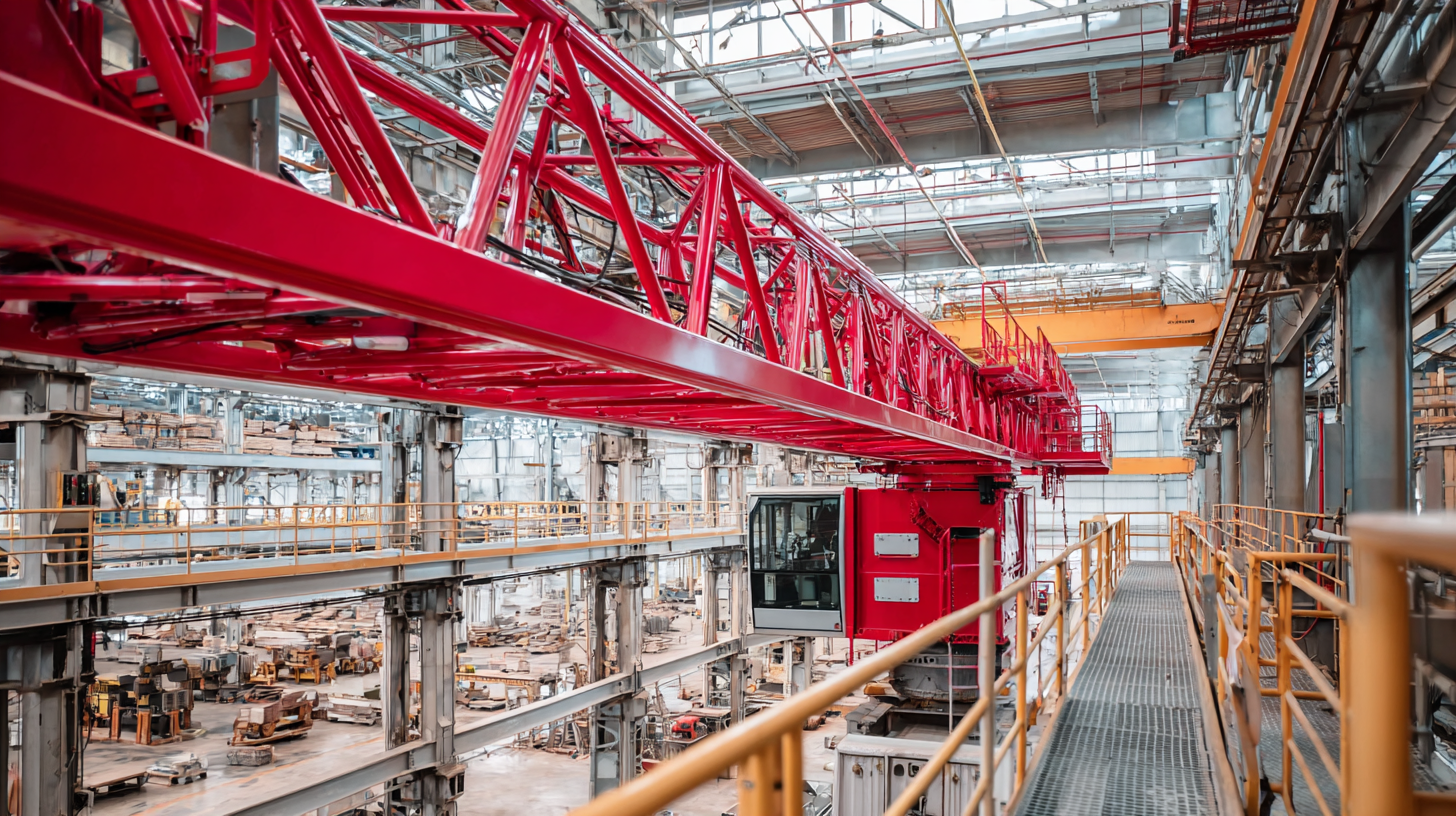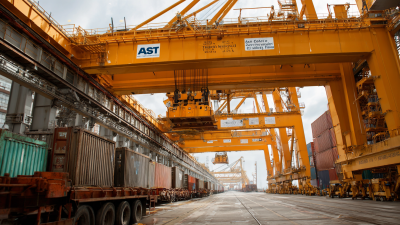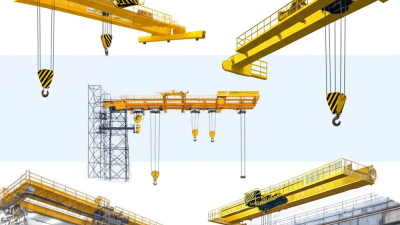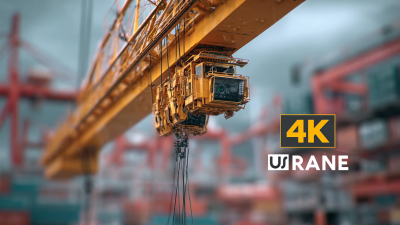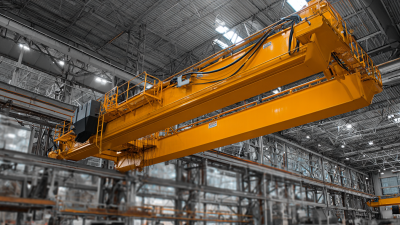Inquiry
Form loading...
-
Phone
-
Wechat

-
Whatsapp

Optimizing indoor crane operations is crucial for ensuring maximum efficiency and safety in various industrial environments. Indoor cranes play a vital role in the material handling process, facilitating the movement of heavy loads across production facilities. However, inefficient crane operations can lead to delays, increased operational costs, and safety hazards for workers.
 This article will explore effective strategies to enhance indoor crane performance, focusing on best practices in workflow management, regular maintenance, and advanced technologies that can be implemented to improve overall safety and efficiency. By adopting these strategies, businesses can not only streamline their operations but also create a safer work environment, ultimately leading to enhanced productivity and reduced downtime.
This article will explore effective strategies to enhance indoor crane performance, focusing on best practices in workflow management, regular maintenance, and advanced technologies that can be implemented to improve overall safety and efficiency. By adopting these strategies, businesses can not only streamline their operations but also create a safer work environment, ultimately leading to enhanced productivity and reduced downtime.
Assessing current indoor crane operations is crucial for identifying areas that require improvement. Begin by conducting a comprehensive audit of your existing processes, equipment, and personnel. This involves evaluating the performance of cranes, the efficiency of workflow, and the safety measures in place. Pay close attention to metrics such as downtime, load handling times, and maintenance records. Gathering feedback from operators and maintenance staff can provide valuable insights into daily challenges and inefficiencies that may not be immediately evident.
Another important aspect of assessment is to analyze the layout of the workspace. A well-designed facility can significantly enhance crane operation efficiency. Consider whether the current setup allows for streamlined movements and whether there are any bottlenecks that hinder productivity. Additionally, ensure that safety protocols are thoroughly reviewed and updated based on the findings from your assessment. Implementing regular training for operators to keep them informed about best practices and safety standards can lead to better overall performance. By focusing on these areas, businesses can significantly improve their indoor crane operations for both efficiency and safety.
Regular maintenance and safety checks are critical to optimizing crane operations, enhancing both efficiency and safety. Statistically, cranes are involved in a significant number of workplace accidents, with the Occupational Safety and Health Administration (OSHA) reporting thousands of crane-related incidents each year, which often stem from equipment failure or inadequate maintenance protocols. As highlighted by recent safety alerts, such as the one regarding the anti-two block (A2B) systems, comprehensive inspections are essential. Ensuring that these systems are fully operational can prevent accidents that arise from unforeseen mechanical failures.
Weather conditions also play a vital role in crane safety. Sudden changes in weather—such as strong winds or heavy rain—can compromise equipment stability and worker safety. It is vital for crane operators to account for these environmental factors during operations. The complexities of modern construction environments necessitate effective safety management practices that include routine inspections and stringent adherence to safety guidelines. By implementing regular maintenance schedules and addressing the impact of weather, companies can significantly reduce the risk of accidents, creating a safer workplace while maximizing operational efficiency.

Enhancing operator training programs is crucial for optimizing indoor crane operations. Effective training equips operators with the skills and knowledge necessary to handle equipment safely and efficiently. It's essential to implement a comprehensive training curriculum that covers both the technical aspects of crane operations and safety protocols. This approach not only minimizes the risk of accidents but also boosts productivity.
**Tips for Training Programs:**
1. **Hands-On Experience:** Incorporate practical training sessions that allow operators to gain real-time experience with the crane. Simulators can also be effective in providing a risk-free environment to practice complex maneuvers.
2. **Regular Assessments:** Conduct evaluations to gauge an operator's understanding and performance. This helps identify areas that need improvement and reinforces ongoing learning.
3. **Safety Drills:** Regularly schedule safety drills to prepare operators for emergency situations. This reinforces the importance of safety protocols and ensures that all team members can respond effectively under pressure.
By focusing on comprehensive training methods, companies can significantly enhance the efficiency and safety of their crane operations.
The utilization of advanced technology in crane operation monitoring is transforming the construction industry, significantly enhancing both efficiency and safety. With innovations like digital twinning and drone technology leading the way, researchers at Queen's University are pushing boundaries in infrastructure monitoring. These technologies facilitate real-time data collection and analysis, allowing for improved monitoring and maintenance practices. For instance, the use of drones to track the operational status of cranes helps in identifying potential hazards and streamlining workflows, which could reduce greenhouse gas emissions by optimizing lifting efficiencies during prefabricated building materialization.
Recent advancements in crane automation further illustrate this trend. Smart technologies, such as AI and IoT, have become integral in optimizing crane-lift operations. Reports indicate that integrating these technologies has drastically reduced crane-related accidents, which continue to be a significant concern in the industry. In addition, remote crane control systems provide operators with safer oversight capabilities from ground-based control centers, reducing the risks associated with direct interaction near active construction sites. As these technologies continue to evolve, the potential for maximized operational efficiency and enhanced safety protocols in crane operations becomes increasingly evident.
Optimizing indoor crane operations is crucial for enhancing workflow and load management while ensuring safety. To achieve greater efficiency, organizations can integrate advanced project management tools that foster better communication and streamline processes. These tools allow teams to plan, schedule, and monitor crane operations effectively, reducing downtime and improving response times.
**Tips:** Start by assessing your current workflow and identifying bottlenecks. Implementing software solutions that facilitate real-time tracking of crane usage can provide valuable insights into operational efficiencies. Additionally, fostering open communication channels among team members ensures that everyone is aware of load management protocols and safety measures.
Artificial Intelligence is playing an increasingly significant role in optimizing operations. With AI solutions, predictive analytics can help anticipate maintenance needs and operational delays, allowing teams to address issues proactively. As the industry continues to embrace AI technologies, professionals must adapt to this evolution by upskilling and staying informed about the latest advancements that can further enhance efficiency and safety in indoor crane operations.
